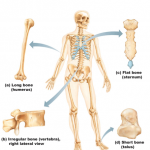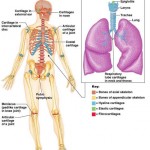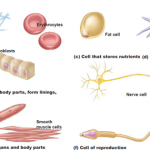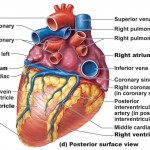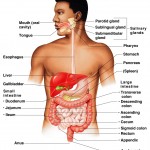Muscle Mechanics: Fascicle Arrangement
A big factor that contributes to muscle force and speed is fascicle arrangements. Other factors such as fiber type, lever systems and load will be discussed in a separate article.
Arrangement of Fascicles
All skeletal muscle is made up of fascicles (bundles of fiber), but fascicle arrangements vary considerably, resulting in muscles with different shapes and functional capabilities. The most common patterns of fascicle arrangement are circular, parallel, convergent, and pennate.
Circular
The fascicular pattern is circular when the fascicles are arranged in concentric rings. Muscles with this arrangement surround external body openings, which they close by contracting. The general term used for these kinds of muscles is “sphincter”. Examples include the orbicularis muscles surround the mouth and eyes.
Convergent
A convergent muscle has a broad origin, and its fascicles converge toward a single tendon of insertion. Such a muscle is triangular or fan shaped like the pectoralis major muscle of the anterior thorax.
Parallel
In a parallel arrangement, the length of the fascicles runs parallel to the long axis of the muscle. Such muscles are either straplike like the sartorius muscle of the thigh, or spindle shaped with an extended belly, like the biceps brachii muscle of the arm. However, some scientists classify spindle-shaped muscles into a separate class as fusiform muscles.
Pennate
in a pennate pattern, the fascicles are short and they attach obliquely to a central tendon that runs the length of the muscle. Pennate muscles come in three forms:
- Unipennate, in which the fascicles insert into only one side of the tendon, as in the extensor digitorum longus muscle of the leg.
- Bipennate, in which the fascicles insert into the tendon from opposite sides so the muscle “grain” resembles a feather. The rectus femoris of the thigh is bipennate.
- Multipennate, which looks like many feathers side by side, with all their quills inserted into one large tendon. The deltoid muscle, which forms the roundness of the shoulder is multipennate.
The arrangement of a muscle’s fascicles determines its range of motion and its power. Because skeletal muscle fibers may shorten to about 70% of their resting length when they contract, the longer and the more nearly parallel the muscle fibers are to a muscle’s long axis, the more the muscle can shorten. Muscles with parallel fascicle arrangements shorten the most, but are not usually very powerful. Muscle power depends more on the total number of muscle fibers in the muscle: The greater the number of muscle fibers, the greater the power. The stocky bipennate and multipennate muscles, which pack the most fibers, shorten very little but are extremely powerful.
Review
- Name the common patterns of muscle fascicle arrangement and relate them to power generation
Check your understanding
- Of the muscles discussed, which would shorten most? Which two would likely be most powerful? Why?
Improve your muscles
- A great way to get in shape without even realizing it is to wear weighted clothing while you study or work.
We hope this article has helped you with your studies. Our next article will focus on bone-muscle relationships, lever systems, and mechanical advantage vs. mechanical disadvantage.
Related Posts
Category: Muscular



